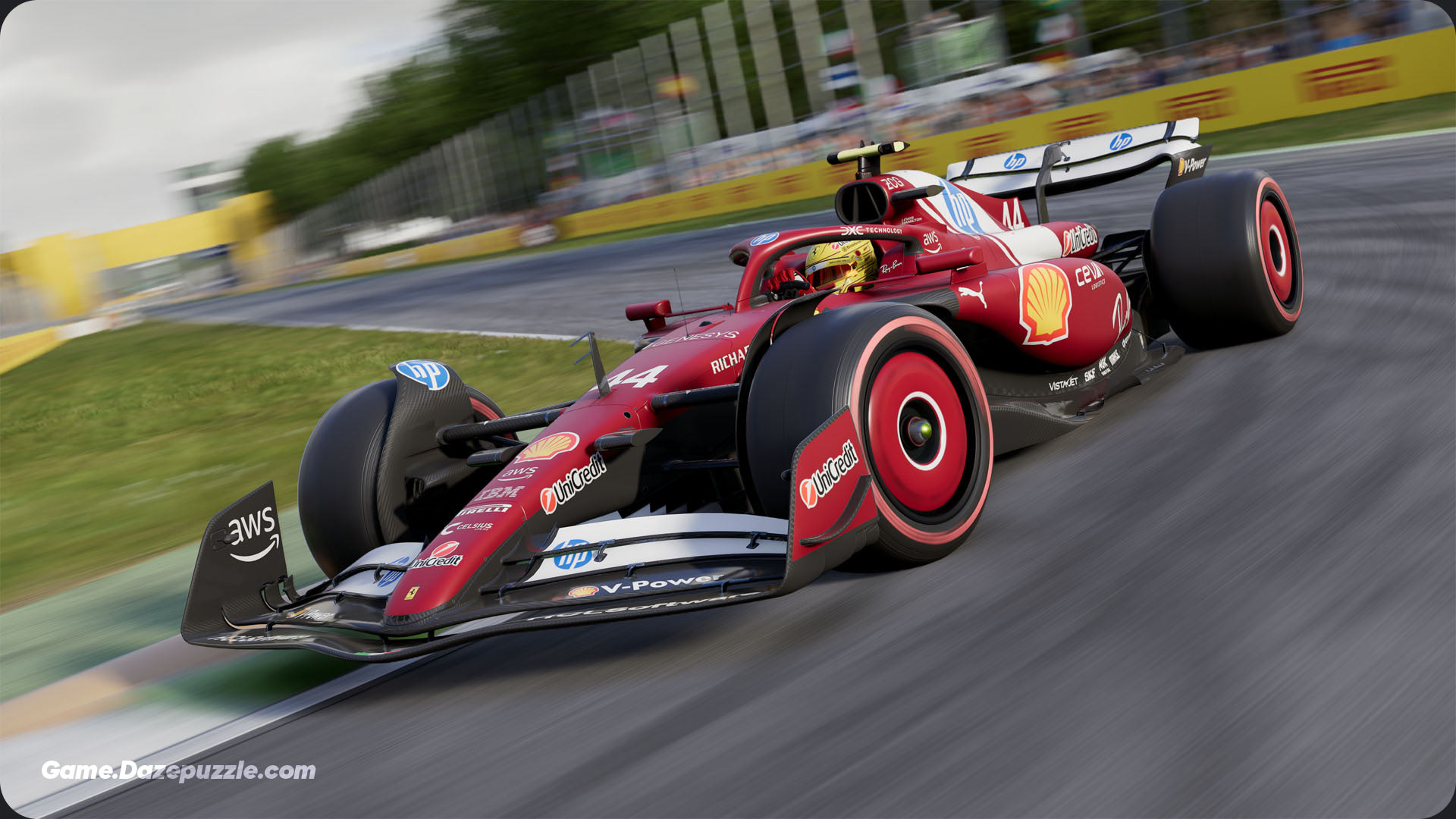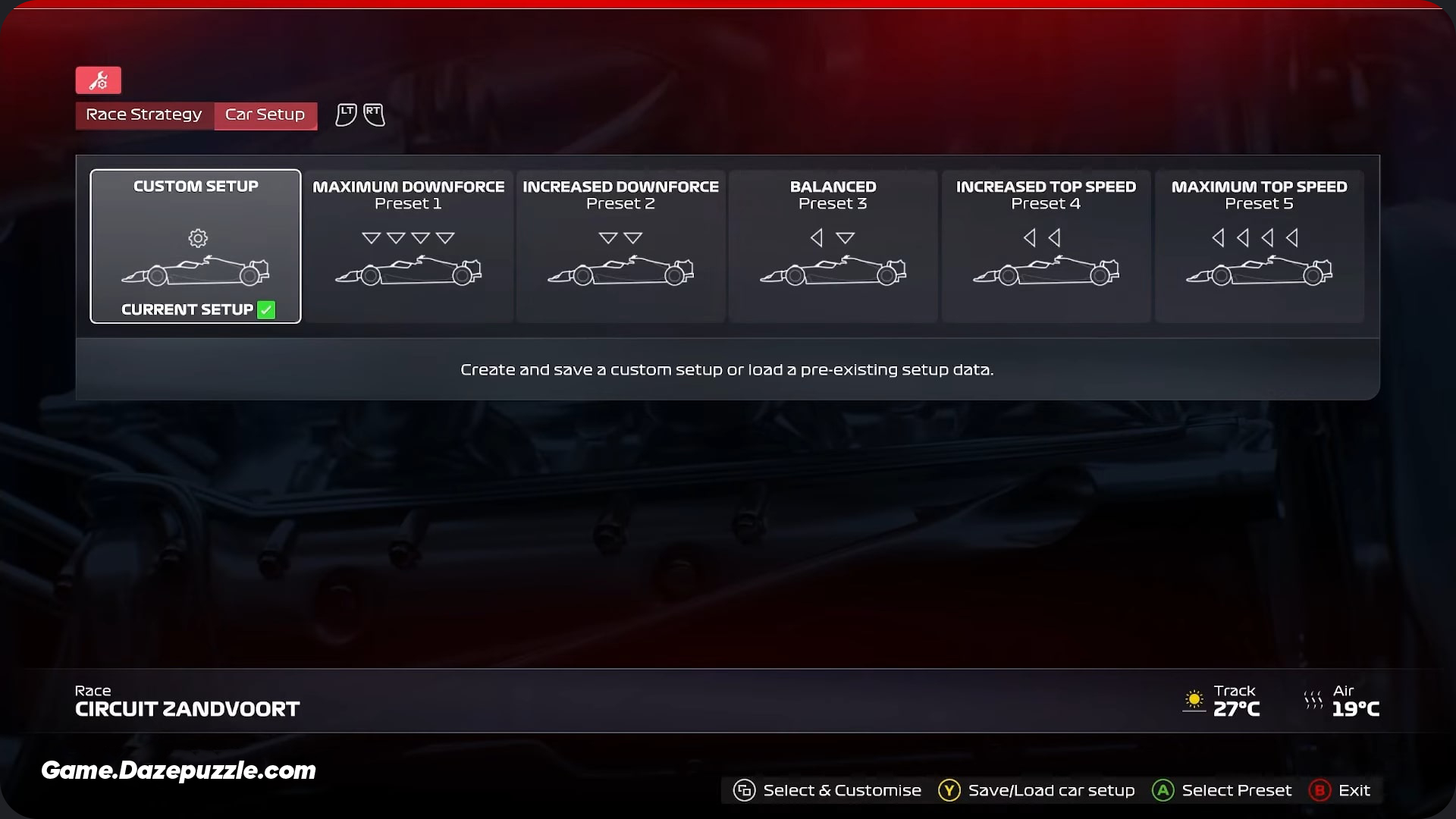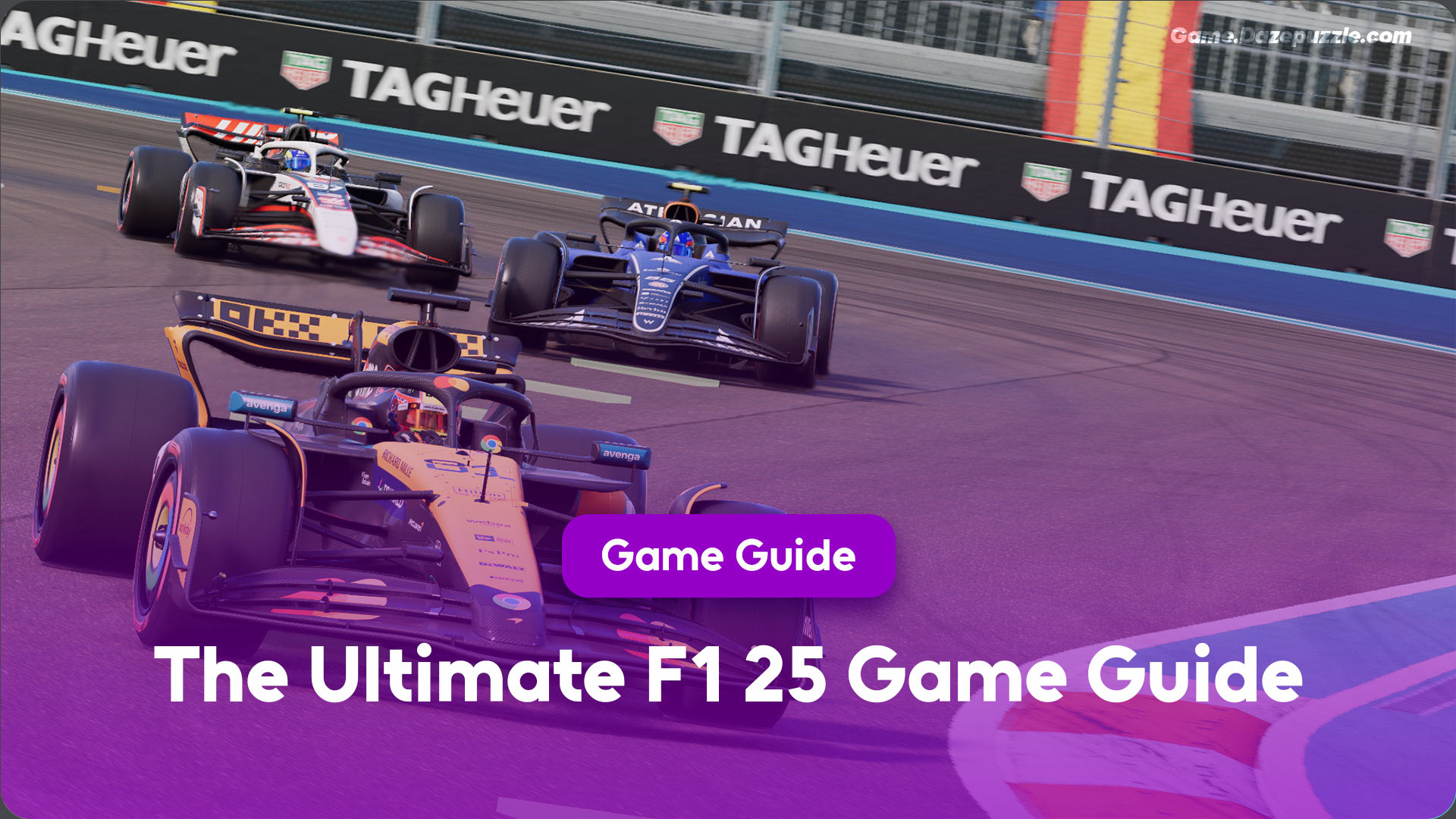The five red lights illuminate, one by one. Your heart syncs with the roar of the engine, a symphony of power waiting to be unleashed. In the cockpit, the world narrows to a single strip of asphalt ahead. This is the razor’s edge of motorsport, a world of millimeter precision and split second decisions where champions are forged. Welcome to F1 25, the most immersive and demanding simulation of Formula 1 to date.
Getting to grips with this year’s game is a challenge. The handling is more realistic, the AI is smarter, and the car setup screen can look like an engineering textbook. But that’s where the true satisfaction lies. This comprehensive F1 25 game guide is your race engineer, your strategist, and your driver coach, all rolled into one. We’ll break down the complex systems into simple, actionable advice, guiding you from your first nervous laps to your first triumphant podium. It’s time to drop the clutch and begin your journey to the top.
What Is in Our Ultimate F1 25 Game Guide
What’s New in F1 25?: A Driver’s Briefing
For returning veterans and new drivers alike, understanding the key changes in this year’s installment is crucial. F1 25 isn’t just a roster update; it’s a significant step forward in realism and depth.

A Revolution in Handling and Physics
One of the biggest points of feedback from F1 24 was its challenging handling model, which many players found prone to unpredictable oversteer. Codemasters has completely overhauled this system in F1 25. The new handling model feels smoother, more responsive, and provides a much better sense of grip. Cars feel more planted and predictable, rewarding smooth inputs and punishing aggressive, jerky movements. This change alone makes the driving experience more intuitive and enjoyable.
Unprecedented Track Accuracy with LIDAR Technology
A key reason for the improved handling is the groundbreaking use of LIDAR technology to scan and recreate several of the game’s circuits, including fan favorites like Spa and Suzuka. This technology captures millions of data points, recreating the track surface, curb heights, and cambers with millimeter accuracy. This isn’t just a graphical upgrade; it directly impacts the physics. You will feel every subtle bump and undulation in the asphalt, forcing you to adapt your driving line just as real drivers do.
Smarter, More Dynamic AI
The AI drivers have also received a significant intelligence boost. They are more aggressive in wheel to wheel racing, smarter with their race strategies, and, most importantly, more prone to making realistic mistakes under pressure. You’ll see them lock up their brakes, miss an apex, or struggle for grip in wet conditions, making every race feel more dynamic and unpredictable than ever before.
Your Path to Glory: Game Modes Explained
F1 25 offers a variety of ways to live out your Formula 1 dream, from managing your own team to starring in a dramatic story.
My Team 2.0: The Team Principal’s Chair
The beloved My Team mode has undergone its biggest revamp yet. The fundamental change is your role: you are no longer a driver owner starting the 11th team on the grid. Instead, you step into the shoes of a Team Principal, taking charge of a full team with two drivers.
This transforms the mode into a deep management simulation. The R&D system is now a two step process of researching and then manufacturing parts, forcing you to make tough strategic decisions about resource allocation. You’ll also have to manage a budget cap for the first time, adding another layer of realism. In each race weekend, you decide which of your two drivers you will control, creating interesting tactical choices as you balance your own championship ambitions with the development of your second driver.
Braking Point 3: The Story Continues
The popular narrative driven mode, Braking Point, returns for its third chapter, continuing the dramatic story of the fictional Konnersport team. This scenario based mode places you in specific, high pressure moments within a race, challenging you to achieve certain objectives to advance the story.
F1 World & Multiplayer: Your Online Hub
F1 World acts as the central hub for various solo and multiplayer activities. While it offers a way to upgrade a generic “F1 World Car” and earn cosmetic rewards, the real heart of the online experience is the Ranked Multiplayer.
The most important system to understand here is your Driver License, which tracks your RaceCraft, Pace, and, most critically, your Safety Rating. This is the key to a positive online experience. By driving cleanly and avoiding collisions, you will earn a higher Safety Rating (A or B). The game’s matchmaking system will then place you in lobbies with other clean drivers, leading to far more respectful and enjoyable races. For any new player heading online, your first priority should be to improve your Safety Rating.
Engineering Victory: The Complete Car Setup Guide
The car setup screen can be intimidating, but understanding it is the key to unlocking lap time. The goal is always to find the perfect balance between straight line speed and cornering grip, tailored to each specific track.
The Philosophy of a Good Setup
A crucial distinction to make is between a Time Trial setup and a Race setup. A time trial setup is an aggressive, knife edge configuration designed for a single perfect lap. A race setup, however, must be stable, predictable, and, most importantly, kind to its tires over a long distance.
The best way to learn is to start with a default setup, change one thing at a time, run a few laps to feel the difference, and then decide if the change was positive.

Deconstructing the Setup Screen (Simplified)
- Aerodynamics (Front & Rear Wing): Higher wing angles create more downforce, which means more grip in corners but less speed on the straights. Lower wing angles do the opposite.
- Transmission (Differential): This controls how the rear wheels rotate. A higher “On Throttle” setting gives you better traction out of slow corners but can cause wheelspin.
- Suspension Geometry (Camber & Toe): These settings affect how the tires are angled. Generally, more negative camber (top of the tire leaning in) helps with mid corner grip.
- Suspension (Springs, Anti Roll Bars, Ride Height): This manages the car’s weight transfer. Stiffer suspension is better for high speed stability, while softer suspension is better for riding over curbs and in wet conditions. A lower ride height reduces drag but risks bottoming out.
- Brakes (Brake Pressure & Bias): Higher pressure means more stopping power but a higher risk of locking the wheels. Brake bias adjusts the balance between front and rear brakes; moving it forward can increase stability during heavy braking.
- Tires (Tire Pressure): This directly affects tire temperature and grip. The ideal operating temperature window is between 85-105°C. Adjusting pressure is the main tool to stay within this window.
Starting Point Setups for Different Track Types
| Track Type | Example TracksT | Aerodynamics (Wings) | Suspension (Stiffness) | Ride Height |
|---|---|---|---|---|
| High Speed | Monza, Spa, Las Vegas | Low (e.g., 5-15) | Stiff | As low as possible |
| High Downforce | Monaco, Hungary, Singapore | High (e.g., 40-50) | Soft | Higher |
| Balanced | Silverstone, Suzuka, COTA | Medium (e.g., 20-35) | Medium Stiff | Medium |
| Wet (Any Track) | N/A | Highest Possible | Softest Possible | Highest Possible |
The Art of Driving: Advanced On Track Techniques
A perfect setup is useless without the skill to execute it. Mastering these techniques, especially with driving assists turned off, is what separates the good from the great.
Race Strategy Essentials
A fast driver with a poor strategy rarely wins. Understanding tire management and pit stop tactics is fundamental.
Tire Management
You must use at least two different tire compounds in a dry race. Managing their wear to make your chosen strategy work is a core skill.
The Undercut & Overcut
These are two key pit stop tactics. The Undercut involves pitting a lap or two before your rival to take advantage of fresh, faster tires. The Overcut involves staying out a lap or two longer, hoping to run faster in clear air while your rival is on cold tires or stuck in traffic.
ERS & DRS Management
Use your Energy Recovery System (ERS) “Overtake” mode strategically for attacking and defending. The Drag Reduction System (DRS) is your primary tool for passing on the straights; make sure you are within one second of the car ahead at the detection point to activate it.

Advanced Driving Techniques (Assists Off)
- The Art of Trail Braking: This is the most important advanced technique. Instead of releasing the brake completely before turning, you gradually ease off the pressure as you turn into the corner. This keeps weight on the front tires, increasing their grip and allowing you to carry more speed through the apex.
- Smooth Throttle Control: With Traction Control off, applying the throttle too aggressively on the exit of a corner will cause the rear wheels to spin. The key is to be smooth and progressive with the throttle, squeezing it on as the car straightens out.
Conclusion: Your Journey to the Podium
F1 25 is a deep and rewarding simulation that celebrates the complexity and thrill of the world’s premier motorsport. It rewards dedication, practice, and a willingness to learn. Whether your goal is to build a championship winning dynasty in My Team, experience a dramatic story in Braking Point, or compete against the best online, the principles in this guide will set you on the right path. The lights are out, and the race has begun. It’s up to you to make your mark.
Thanks for keeping up with Game.Dazepuzzle.com






